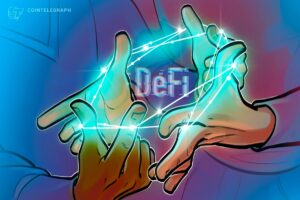What is helium mining and how does it work?

Mining helps ensure the legitimacy of transactions on a blockchain network such as the Bitcoin blockchain. Miners can mine cryptocurrencies using hardware such as a central processing unit (CPU) or application-specific integrated circuits (ASICs). Alternatively, you can withdraw your desired cryptocurrency using smartphones powered by Android and iOS systems.
While technically possible, mining cryptocurrencies on smartphones is generally impractical and ineffective. So, how about an innovative approach to mining and networking infrastructure through a decentralized wireless network? As strange as it sounds, miners can mine cryptocurrency without relying on expensive infrastructure. Helium makes it possible by allowing network nodes to act as hotspot devices.
This article explains about helium ecosystem, helium mining, HNT hotspot mining and how helium mining works.
What is the Helium network?
Helium LoRawan is a distributed hotspot network that provides capable Internet of Things (IoT) devices, long-range wireless access to citizens worldwide. LoRaWAN stands for Long Range Wide Area Network and IoT devices can communicate with LoRa via the open LoRaWAN protocol. IoT devices are smart “gadgets” that connect to a network and exchange data, providing a wider range of connectivity than WiFi.
The Helium Blockchain was developed solely to encourage the development of truly decentralized wireless networks. Helium uses HNT (Helium) tokens as its main currency. However, the project migrated to the Solana blockchain in April 2023.
This move makes HNT compatible with projects – i.e. interoperable – in the Solana ecosystem when deploying services for mobile and IoT tokens (other helium tokens). Mobile Tokens aims to make the creation and operation of decentralized wireless networks seamless with a particular focus on 5G and cellular services. Mobile tokens allow a decentralized cellular access mechanism by providing incentives to establish and maintain mobile data transmission infrastructure.
The purpose of IoT tokens is to facilitate the IoT component of the Helium network. They ensure robust and wide coverage for low-power Internet of Things devices by enabling and facilitating IoT hotspots and related services. IoT tokens greatly enhance network services and reach IoT applications.
In addition, Solana's architecture enables faster transaction speeds and greater efficiency, incorporating innovations such as Proof of History (PoH). This is useful for real-time needs of IoT devices and networks.
Point of contact and network participation
With Helium, anyone can own and manage a wireless IoT network, a unique portable radio router known as a hotspot. Hotspots are plug-and-play wireless devices that provide advanced connectivity to WiFi.
Hotspots are used by miners to build “The People's Network”, a long-distance wireless network for the coverage of IoT devices with low energy needs in exchange for HNT, the native cryptocurrency of the Helium blockchain. The Helium Community allows third-party manufacturers to sell various Helium hotspots.
Proof of Cover (PoC) method
Proof-of-Coverage (PoC), a novel working algorithm, is used by the Helium blockchain to ensure that hotspots accurately describe their location and the wireless network coverage they generate from it. Radio waves are used in the mining process, and hotspots are rewarded for witnessing peer performance, completing PoC challenges, and sharing device data. The most useful tool for viewing PoC-related information is the Helium Network Explorer.
When the Helium network launched in 2019, it used a sophisticated model-based PoC system that included the roles of challenger, beacon, witness, validator, and rewarder. This model aims to accurately determine the geographic locations of hotspots and the corresponding wireless coverage they provide. As the network rapidly expanded and distributed, attempts to use the system grew in complexity and sophistication, requiring adjustments to maintain integrity and efficiency.
As a result, the Helium Amendment proposed 70 introduced an Oracle-based POS system to streamline the process. In this system, hotspots are responsible for their own beacon transmissions, and a decentralized oracle group verifies PoC events. This reduces network overhead and improves scalability and efficiency.
Advantages of Helium network
The benefits of the Helium network over a regular Internet service provider include a high level of security, full encryption and affordable universal Internet access. Moreover, Helium's decentralized architecture provides more affordable solutions for the common infrastructure of business- and consumer-managed communication spaces, especially for IoT devices. This can make Internet access more accessible to people in rural areas or those without service.
Additionally, users don't have to bear the charges that a cellular provider might charge, such as coverage charges or additional hardware costs like a SIM card. That said, users only pay for the data they use to connect their devices – that is, pay-as-you-go – when using the Helium console to start using the Helium network.
Helium supports state-of-the-art technologies for low-power devices like LoRawan, making it an ideal platform for many IoT applications, from smart agriculture to urban planning. Also, Helium offers incentives in the form of HNT rewards to hotspot hosts to encourage its users to be part of the network's expansion. This community-driven approach fosters a collaborative ecosystem.
What is a helium mine?
Using special hardware known as hotspots, helium miners provide wireless network coverage of the helium network. Users become miners on the Helium network by finding or building a WHIP-compliant hotspot and depositing a token pool that matches the number of other miners working in their area. WHIP stands for Wireless Hardware Interface Protocol.
In addition to the blockchain protocol, the Helium Wireless Protocol, WHIP, provides a two-way data transfer mechanism between wireless devices and the Internet, rather than a single coordinator, a network of independent providers.
Internet applications known as routers – aka Helium Network servers – are responsible for ensuring communication points that device data reaches its intended destination and that miners are compensated for their services. These routers purchase encrypted device data from miners, ensuring the integrity and authenticity of data transmission within the network.
As discussed below, in the Helium network, there are three types of hotspots.
Full hotspots: These hotspots hold a full copy of the HNT blockchain and receive rewards for all participating activities, including proof of coverage and data transfer. Complete hot spots without incurring the additional costs of maintaining a local copy of the blockchain. In addition, they are awarded for coverage verification and data transfer functions. Data-only hotspots: These hotspots provide data transfer capabilities to the network without participating in PoC tests. As a result, you will only be rewarded for data transfer activities.
How does helium mining work?
Radio wave technology is used to process helium mining rather than CPUs or ACCs. In addition, blockchain technology can be used to create a wireless network that is more reliable than the network provided by traditional wireless service providers. However, it should be noted that reliability may depend on the topic and context, depending on network density, hotspot distribution and other factors.
Helium hotspots, or miners, provide long-range wireless coverage using special devices called LoRa transmitters. So, how can one earn helium tokens in return? By mining and expanding the coverage of the People's Network in suitable areas, miners earn HNT. The reward rate is proportional to the amount of data a miner transfers – meaning more money when miners transfer more device data. Other factors that affect HNT rewards include the number of devices used and the miner's participation in PoC challenges.
In addition, the network automatically and randomly assigns coverage verification tests to verify the location of communication points (witnesses). Hotspots receive instructions or “challenges” from validators to participate in the PoC and transfer payments to nearby locations for monitoring and verification. These problems are called “symptoms”. However, since they can only generate HNT for data transfers and cannot verify their convenience, HNT hotspot miners with no neighbors get a smaller payout.
Moreover, each compatible device requires data credits (DCs) to send data to the Internet. DCs are created by burning HNT with Burned and Mint Balance (BME), which ensures a balance between the creation of new HNT by mining and the removal of HNT dispersion during the burning process. The BME model uses tokens as a proprietary form of payment, but customers who want to use services do not pay directly. Instead, they burn signs.
How to prepare a helium mine?
As described in the above sections, the hotspot mining, antenna (and its location), cables, smartphones and router are the prerequisites for setting up a helium mine. But how does one find the best helium miner? The placement of antennas and one's geographic location play a key role in finding a suitable helium mine. The following steps will give you an idea of how to set up a helium mine:
Step 1: Download and install the Helium app
The first step involves downloading the Helium app (available for Android and iOS) and setting up an account. After this, a helium wallet is created that users can use to store their data.
The application generates a 12-word genealogy to back up the helium bag. The app prompts the user to create a six-digit PIN that must be entered each time they log in as an additional security measure.
Step 2: Add the helium extract
The next step is to look for the plus (+) sign to add a helium miner such as RAK Hotspot Miner to the app. The selected mine must be plugged in to work, and a small red light will confirm that it is working. Then the button on the back of the device needs to be pressed for Bluetooth pairing. Alternatively, WiFi can be configured by selecting from the network settings in the Helium app.

It is important to note that choosing a helium miner that is reliable and accepted by the helium community is important. Potential buyers should look for points that match their frequency range and have a good performance and support record.
Step 3: Choose a hotspot, confirm the location and set the antenna
Now the list includes the selected hotspot mine. The user selects “Hotspot” to continue. A prompt will appear to add a hotspot. The user adds a hotspot, confirms the hotspot's location, and configures the antenna.

The first verification is free (paid by manufacturers) and users are responsible for paying the transaction fee (in HNT) for additional verifications. If the user is still ready to set a location, they can press “Skip”. If you're good to go, select “Continue.” The added hotspot can be viewed and managed under the Hotspots tab of the mobile app.
After the connection point is added and the location is verified, it will start participating in network activities, including PoC tests and data transmission, and will earn HNT based on its performance.
How to upgrade your helium mining setup
The goal of optimizing helium ore processing is to maximize the radio frequency signal reach of the communication site. Placing the antenna in the highest position – ideally outside or near a window – will help keep it away from obstructions and improve the line of sight to neighboring hotspots.
By using a high gain antenna compatible with the frequency band used in the area, the signal strength and coverage can be greatly increased. To protect the antenna from static damage and lightning, it must be properly grounded.
Also, updating the hotspot firmware to the latest version ensures the best performance and security. In addition, it is important to consider the density of hot spots in the area; Too close can cause signal overlap, but too far makes it impossible to participate in PoC tests. Effective management of these factors can greatly increase the efficiency and profitability of a helium mining setup.
The future of the helium network
The future of the Helium network looks promising, with the move to Solana providing users with improved support for both hardware and software wallets and integration with the many Solana ecosystem applications. Despite the migration, the HNT, MOBILE and IOT tokens will retain their value in the Helium ecosystem, unaffected by Solana's native SOL (SOL) token.
The introduction of 5G and the transition to Solana as the main blockchain layer did not change the dynamics between mobile and HNT tokens. 5G hotspot holders will continue to receive mobile tokens, while HNT holders will still be able to carry their tokens.
The IoT and 5G components of the Helium network are ready for growth, benefiting from the reliability and scalability offered by the new architecture. Innovations like Solana Mobile Stack and Saga Phone are set to enrich the mobile experience in the ecosystem, further expanding Helium's capabilities and reach.












